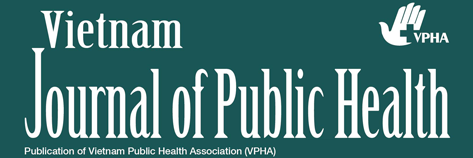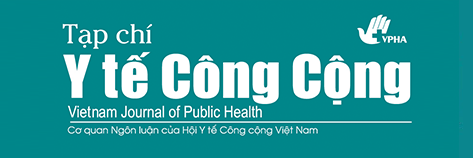Thích ứng thang đo DMC-II vào đánh giá sự phát triển của trẻ ở 9 tháng tuổi tại khu vực nông thôn Việt Nam
Tóm tắt
Từ khóa
Toàn văn:
PDF##submission.citations##
Guillemin, F., C. Bombardier, and D. Beaton, Cross-cultural adaptation of health-related quality of life measures: Literature review and proposed guidelines. J Clin Epidemiol, 1993. 46: p. 1417-1432.
van de Vijver, F. and P. YH, Conceptual and Methodological Issues in Adapting Tests, in Adapting Educational and Psychological Tests for Cross-Cultural Assessment, R. Hambleton, P. Merenda, and C. Spielberger, Editors. 2005, Lawrence Erlbaum Associates: Mahwah, NJ. p. 39-63.
The ITC Guidelines for Translating and Adapting Tests Second ed. 2017: International Test Commission.
Fernald, L., et al., A Toolkit for Measuring Early Childhood Development in Low and Middle-Income Countries. 2017, World Bank, Washington, DC: © World Bank.
Gjersing, L., J. Caplehorn, and T. Clausen, Cross-cultural adaptation of research instruments: language, setting, time and statistical considerations. BMC Med Res Methodol, 2010. 10(13).
Borsa, J., B. Damásio, and D. Bandeira, Cross-Cultural Adaptation and Validation of Psychological Instruments: Some Considerations. Paidéia, 2012. 22(53): p. 423-432.
Wang, W., H. Lee, and S. Fetzer, Challenges and Strategies of Instrument Translation. West J Nurs Res, 2006. 28: p. 310-321.
WHO. Process of translation and adaptation of instruments. 2018 [cited 2018 April 24]; Available from: http://www.who.int/substance_abuse/research_tools/translation/en/.
Paul, H., Guidelines for Cultural and Linguistic Adaptation of ASQ-3™ and ASQ:SE. 2013, Brookes Publishing.
Gjersing, L., J. Caplehorn, and T. Clausen, Cross-cultural adaptation of research instruments: language, setting, time and statistical considerations. BMC Medical Research Methodology, 2010. 10(13).
Arafat, S., et al., Cross Cultural Adaptation & Psychometric Validation of Research Instruments: a Methodological Review. J Behav Health, 2016. 5(3): p. 129-136.
Gudmundsson, E., Guidelines for translating and adapting psychological instruments. Nordic Psychology, 2009. 61(2): p. 29-45.
Abubakar, A., et al., Developmental monitoring using caregiver reports in a resource-limited setting: the case of Kilifi, Kenya. Acta Paediatr, 2010. 99(291-297).
Prado, E., et al., Extending the Developmental Milestones Checklist for use in a different context in Sub-Saharan Africa. Acta Paediatr, 2014. 103(4): p. 447-454.
Prado, E., et al., Lipid-Based Nutrient Supplements Plus Malaria and Diarrhea Treatment Increase Infant Development Scores in a Cluster-Randomized Trial in Burkina Faso. J Nutr, 2016.
Matias, S., et al., Home fortification during the first 1000 d improves child development in Bangladesh: a cluster-randomized effectiveness trial. Am J Clin Nutr, 2017. 105(4).
Bich, T., T. Long, and D. Hoa, Community‐based father education intervention on breastfeeding practice—Results of a quasi‐experimental study. Matern Child Nutr, 2019(Suppl 1:e12705).
Bich, T., Changes of knowledge, attitude and practice of fathers regarding supporting six months exclusive breastfeeding: Results of a community based intervention applying social cognitive theory. Journal of Health and Development Studies, 2017. 1(2): p. 19-28.
Bich, T. and D. Tuan, Intention and practice of exclusive breastfeeding for the first six months: The results of a community-based intervention targeting fathers applying theory of planned behavior. Journal of Health and Development Studies, 2017. 1(2): p. 29-37.
Dang, H., et al., Adaptation of the Wechsler Intelligence Scale for Children-IV (WISC-IV) for Vietnam. Psychol Stud (Mysore), 2012. 56(4): p. 387-392.
Larson, L., et al., A Cross-Sectional Survey in Rural Bihar, India, Indicates That Nutritional Status, Diet, and Stimulation Are Associated with Motor and Mental Development in Young Children. J Nutr, 2017. 147(8): p. 1578-1585.



